The X Button
First Outing
by Todd Ciolek,

This week's column is mostly about the past year's underappreciated games Before I get to that, however, I'd like to talk about my overall favorite title of 2012: Gravity Rush.
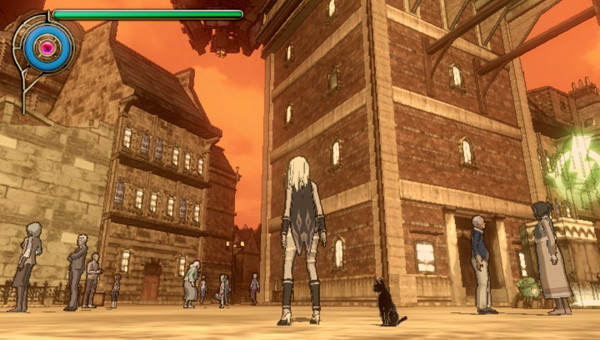
Gravity Rush has problems. Its free-floating gameplay is almost too ambitious an idea, and the camera system is usually at odds with the diving kicks and other aerial attacks of its heroine, Kat. As a whole, however, Gravity Rush is astounding. It's marvelous to toy with a fundamental law of physics: dashing through the skies, running up the side of a building, or racing around the underside of a floating city block. It's made all the more intriguing by the game's sense of aesthetics, as much the product of Moebius-inspired European comics as the standard manga tones. Nor does it hurt that Kat's a likeable lead (despite some overt pandering), and her story is never so serious that Gravity Rush can't have fun with everything.
There were technically better games released in 2012. Longer ones, tougher ones, more complex and detailed ones. But nothing drew me in as much as Gravity Rush. No other game had me coming back just to mess around, to dart above the sepia-toned city and simply enjoy the view. And no other game made me want to see more.
It was harder than usual for me to pick a favorite. Journey is a fascinatingly minimalist adventure. Kid Icarus: Uprising is Nintendo's most daring and fun creation in years. Crimson Shroud and The Walking Dead push game storytelling forward in their own little ways. Xenoblade Chronicles and one other game (more on it below) bring the aging standards of RPGs back to life. All things said and done, 2012 was a fine year for video games. We hear much about the industry's commercialized failings and unoriginal methods all the time, and much of it rings all too true. But there's always something novel to be found in video games, and we didn't have to look that hard in 2012.
NEWS
CRIMSON DRAGON DEMO LEAKED AND RETRACTED, SMARTPHONE GAME STILL AROUND
Microsoft's Crimson Dragon was a curious no-show last year. First exhibited at the 2011 Tokyo Game Show, the game emerged as one of the biggest titles for the motion-sensing Kinect, but that wasn't what attracted the most interest. Fans were intrigued by the game's obvious resemblance to Sega's old Panzer Dragoon games, brought about by the fact that both share creator Yukio Futatsugi. So it was an unpleasant surprise when the game missed its Xbox Live release date last June 13. The curiosity deepened last week, when a Crimson Dragon demo accidentally leaked onto Japan's Xbox Live network.
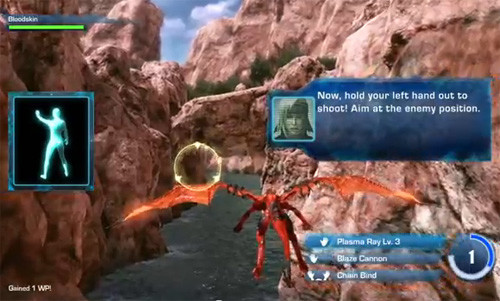
Microsoft was swift in pulling down the demo, but several astute souls grabbed it and posted videos of the whole experience. It's all very Panzer Dragoon, from the bouncy score to the lock-on dragon lasers. Of course, it's playable only with the Kinect, and the demo's on-screen prompts suggest that players have to contort and wave to pull off basic flying maneuvers. That may be the whole point of the Kinect (and the reason Microsoft backed Crimson Dragon in the first place), but it seems unnecessary. Panzer Dragoon games controlled just fine with conventional controllers on the Sega Saturn and Xbox, so why the motion-sensor silliness? Well, we know the answer: Microsoft needs a good Kinect title, especially after Steel Battalion: Heavy Armor flopped.

Ardent Panzer Dragoon fans at least have Crimson Dragon: Side Story for Windows Phones. Released last year, the game follows a dragon pilot named Sana as she hunts down a mysterious new flying beast. The game's five stages are all side-scrolling affairs, and simple ones at that (your mount is limited to flying up or down). Still, it has the air of a Panzer Dragoon, and there's a pile of abilities to unlock. Side Story sets the stage for Crimson Dragon's broader scope—which we might not ever see, at this rate.
NINTENDO ANNOUNCES NEW POKEMON THAT LOOKS A LOT LIKE OLD POKEMON
Some people brand Nintendo as unoriginal, but others are quick to point out all the risks the company takes, from the Earthbound series to the entire Wii thing. Of course, Nintendo can afford to experiment because of certain properties that are flogged to live again and again. And nothing's flogged more than Pokémon. So perhaps we shouldn't be too critical when the latest Pokémon title seems a 3-D version of familiar Pokémon titles.
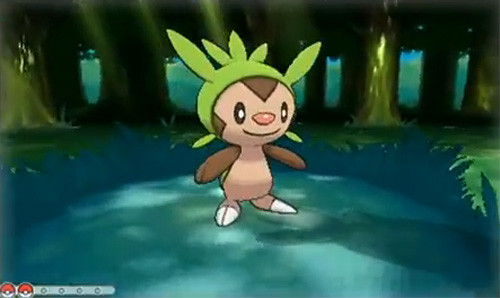
The first trailer for Pokémon X and Pokémon Y introduces a few new monsters, including the above-pictured Chespin, yet far more is made of the game's 3-D environments and characters. Pokémon titles have had polygon graphics before, but X and Y (are they male and female versions?) are the first main Pokémon entries to feature such a look. And there's one more notable thing about Nintendo's latest capitalist venture: the two games get a worldwide launch this October. It'll presumably discourage piracy as well as that smartass kid who imports Japanese Pokémon games and becomes the talk of the playground months before anyone else can get a copy.
UPCOMING DATING SIMS LET PLAYERS COURT LANCELOT, SHERLOCK HOLMES JR.
Might 2013 be the year of the bizarre historical dating simulator? For proof, look to two new games. One of them is Idea Factory's Princess Arthur, a vision of the Arthurian legend in which a girl named Alu (Al?) pulls Excalibur from its stony confines and thus becomes ruler of England.
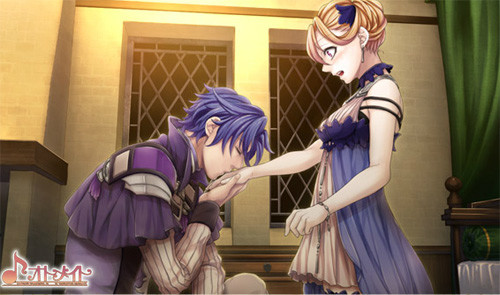
Naturally, all of the Knights of the Round Table (plus Merlin and Mordred) are handsome young types, and our heroine can forge relationships with them. While this is hardly the strangest take on the myth of King Arthur (see also Fate/stay night, Eiyuu Senhime, and that awful King Arthur and the Knights of Justice cartoon), it's apparently new ground for a visual novel aimed at female players.
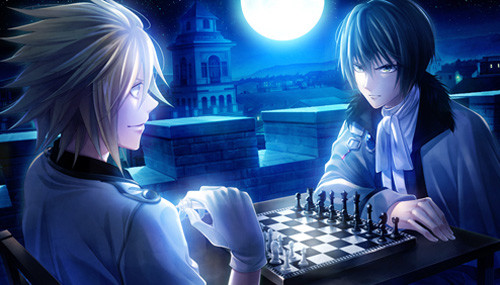
Not to be outdone, Marvelous and Karin Entertainment have English Detective Mysteria, a similarly romance-driven game set in 19th-century London. Players control Emily, a wealthy young woman investigating the deaths of her parents. She's aided by the relatives of famous mystery icons: Sherlock Holmes Jr. and Watson Jr. (above), housekeeper Miss Hudson, Sara Marple (after Agatha Christie's Miss Jane Marple), Lupin Jr., and the duo of Kenichirou Akechi and Seiji Kobayashi. The last two are inspired by the detective novels of Edogawa Rampo. There's no sign of Hercule Poirot's kid, but you'll see a prettied-up version of Jack the Ripper.
Both games are due out for the Japanese PSP this March. A North American release for either seems unlikely, but that's what a lot of people said about Hakuoki: Demon of the Fleeting Blossom.
MEGA MAN LEGENDS 3 BECOMES FAN-MADE DIVERSION
Last week I promised to stop complaining about CAPCOM cancelling Mega Man Legends 3. And so I shall stop. However, I can till point out that a bunch of Mega Man fans put together a game that simulates one of the challenges from Legends 3.
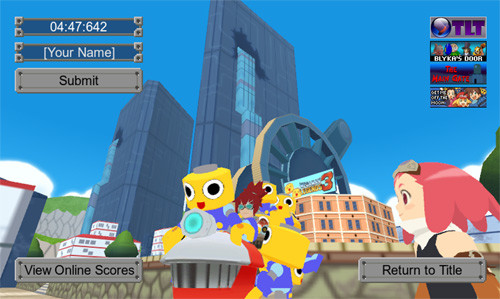
Players control Barrett on his hoverbike, and he's required to collect ten Servbots and deliver them to heroine Aero. It's just a basic fan game, and you'll turn off the music in short order. But it's as close to an actual Legends 3 as we'll ever play. Not that I am complaining.
THE TOP FIVE OVERLOOKED GAMES OF 2012
Let's face it: the best games of 2012 were noticed and noticed often. Perhaps some weren't as popular as they deserved, but one can't call Gravity Rush overlooked when Sony gave it away with PlayStation Plus subscriptions. And Journey hardly went neglected, since it was released twice in the span of ten months. Yet there were other games that didn't quite get their due for one reason or another, and it's for their sake that we put together this list every year.
5. CHERRY TREE HIGH COMEDY CLUB 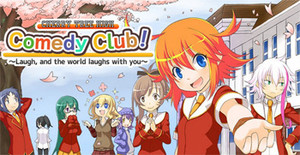 Cherry Tree High Comedy Club is not a shooter, an action-platformer, or a music game. In fact, it's hard to box it into the normally inclusive field of “adventure” titles, as it lacks even that genre's emphasis on finding items and solving puzzles. No, Cherry Tree High Comedy Club is a high-school simulator, dropping players into the role of ambitious yet unproven student Miley Verisse. She sets forth to recruit friends and total strangers to join her just-formed comedy troupe, and she does it all by talking to people and sharpening her knowledge of various subjects. Everything in the game depends on how Miley spends her time, and she's forced to portion out her hours between studying, working, and hanging out with potential club recruits.
Cherry Tree High Comedy Club is not a shooter, an action-platformer, or a music game. In fact, it's hard to box it into the normally inclusive field of “adventure” titles, as it lacks even that genre's emphasis on finding items and solving puzzles. No, Cherry Tree High Comedy Club is a high-school simulator, dropping players into the role of ambitious yet unproven student Miley Verisse. She sets forth to recruit friends and total strangers to join her just-formed comedy troupe, and she does it all by talking to people and sharpening her knowledge of various subjects. Everything in the game depends on how Miley spends her time, and she's forced to portion out her hours between studying, working, and hanging out with potential club recruits. Somewhere within this rapid simulation of a school semester and a few weeks of vacation, a game like no other emerges. Miley's adventure is peopled with the usual round of stereotypes, including a bookworm, an easily confused exchange student, and a punk-rocker attired with all the directionless rebellion that a teenager should have. The game hides a surprising tough challenge within its cute borders, and it's hard to win over even the required handful of club members within the allotted time. Hey, high school's more grueling than it looks. Goofiest Name: Translated with the same sense of revision as a Phoenix Wright game, Cherry Tree High Comedy Club abounds with names like May Bonbon and Sara Croft. But it's Miley Verisse who gets the best pun. Put her surname first if you don't get it.
|
4. GUNGNIR AND GROWLANSER: WAYFARER OF TIME 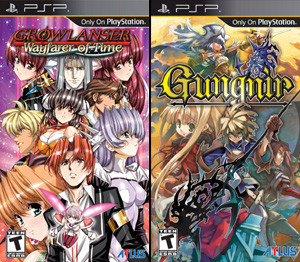 In theory, Growlanser: Wayfarer of Time and Gungnir had twice the audience of a normal release, as both are compatible with the PSP as well as the Vita. Yet it wasn't that simple; the PSP library is fading, and the Vita hasn't yet come into its own. So neither game caught on as it should have among the strategy-RPG crowd.
In theory, Growlanser: Wayfarer of Time and Gungnir had twice the audience of a normal release, as both are compatible with the PSP as well as the Vita. Yet it wasn't that simple; the PSP library is fading, and the Vita hasn't yet come into its own. So neither game caught on as it should have among the strategy-RPG crowd. To be fair, Growlanser requires certain tolerances from the player. For one thing, you'll need to appreciate (or at least look past) the glossy sensibilities of Satoshi Urushihara. As Growlanser's artist since the start, he crafts some rather silly outfits for his invariably voluptuous female characters, and the cover shows a bunch of Urushihara-designed characters stacked in an awkward totem pole of titillation. Nor does Growlanswer look all that modern, being a port of a PlayStation 2 game over ten years old. Yet there's substance beneath all of its throwbacks to a bygone era. The game's battles blend an old-fashioned aesthetic with open-field approaches, and the player's relationships with the supporting cast figure into several different endings. Compared to Growlanser, Gungnir is more recent and yet less accessible. It's the latest in Sting's oft-neglected Dept. Heaven series, and it builds yet another strategy-RPG from grim warfare and deceptively cute artwork. Like many strategy-RPGs, Gungnir unfolds in a fantasy realm where class warfare gives way to all sorts of bloodshed, and a band of rebels is caught at the middle of it all. The game uses a familiar grid layout for its battles, but it's challenging in ways its genre often ignores. Enemies are resourceful and well-matched to the player's party, with the resulting battles eating up considerable time and tactical foresight. It's not the most accessible strategy-RPG of late, but there's a lot to see inside Gungnir. Goofiest Name: Growlanswer's protagonist Crevanille has the weirdest moniker among all the characters. In Gungnir, the honor goes to the improbably titled Ziyad Berlioz.
|
3. RHYTHM THIEF & THE EMPEROR'S TREASURE  Many things brought about Rhythm Thief. It's a music game, sure, but it's also clearly influenced by the Professor Layton franchise and other visions of old-fashioned capers. Most of all, though, Rhythm Thief is what arises when a game sheds realism and inhibition for the sake of a good, silly adventure. Its young hero moonlights as Phantom R, a thief who's in the habit of swiping priceless treasures and returning them shortly thereafter. During a heist loosely connected to his absent father, Phantom R rescues a young violinist from the thugs of a man who claims to be Napoleon himself. Thus begins a tale of blackmail, crazed ambitions, bad parenting, and plenty of dancing.
Many things brought about Rhythm Thief. It's a music game, sure, but it's also clearly influenced by the Professor Layton franchise and other visions of old-fashioned capers. Most of all, though, Rhythm Thief is what arises when a game sheds realism and inhibition for the sake of a good, silly adventure. Its young hero moonlights as Phantom R, a thief who's in the habit of swiping priceless treasures and returning them shortly thereafter. During a heist loosely connected to his absent father, Phantom R rescues a young violinist from the thugs of a man who claims to be Napoleon himself. Thus begins a tale of blackmail, crazed ambitions, bad parenting, and plenty of dancing. Rhythm Thief and the Emperor's Treasure is little more than a hodgepodge of mini-games at its heart. Players navigate the game's various challenges by keeping time with the music, whether Phantom R is dashing across rooftops, fending off armored goons, or hiding behind the statues of a museum. And it all plays into the game's unceasingly ridiculous storyline. Pains are taken to visit actual Paris landmarks like the Louvre and Les Invalides, and it only makes things all the more insane once the main characters spout cartoony accents and launch schemes involving the ancient secrets of Babylonian civilization. It's all sewn up with the goofball charms of a good Lupin III yarn, hokey and grandiose and highly entertaining. Goofiest Name: Fondue, our hero's dog. It's the best food-based pet name since the never-aired Shiden TV series called a cat "Roast."
|
2. TOKYO JUNGLE  Tokyo Jungle begins with a seemingly idyllic concept: humankind has vanished, leaving an entire city to be overrun by animals. Yet this is nature at its least idealized. Predators and prey quickly settle into their normal roles, and players get to see every graphic moment of their struggle to survive. Whether you're controlling a deer forced to dodge attackers or a squad of Pomeranian dogs, each trip through Tokyo Jungle is a challenge to subsist, reproduce, and generally stave off the inevitable fate of all living creatures. In the game's story mode, there's a larger goal as well: discovering just what happened to the human race and deciding whether or not the animals are better off without their evolutionary superiors.
Tokyo Jungle begins with a seemingly idyllic concept: humankind has vanished, leaving an entire city to be overrun by animals. Yet this is nature at its least idealized. Predators and prey quickly settle into their normal roles, and players get to see every graphic moment of their struggle to survive. Whether you're controlling a deer forced to dodge attackers or a squad of Pomeranian dogs, each trip through Tokyo Jungle is a challenge to subsist, reproduce, and generally stave off the inevitable fate of all living creatures. In the game's story mode, there's a larger goal as well: discovering just what happened to the human race and deciding whether or not the animals are better off without their evolutionary superiors. A bizarre mix of elegy and comedy, Tokyo Jungle seizes common game clichés in its tale of an urban expanse reverted to the beasts. Stealth missions become vicious hunts for prey or desperate bids for escape. Collecting items is a path to attracting a mate and reproducing. And the game's somewhat basic attacks only build up the aptly haphazard sense of animals tearing each other to shreds. And it all makes Tokyo Jungle into the most entertaining slog this side of Dark Souls. Goofiest Name: Most of the animals involved don't have names, so there's not much there.
|
1. THE LAST STORY  It's strange to call The Last Story under-appreciated. It's reportedly the best-selling title ever released by XSEED Games, and it was backed by the same fan-run campaign that lobbied for a U.S. version of Xenoblade Chronicles. Yet Hironobu Sakaguchi's latest attempt at an RPG revolution nonetheless went ignored in many sectors, even as genre followers and reviews praised Xenoblade. The Last Story's a different sort of RPG, to be certain. It's an ideal creation for those who complain that modern RPGs are too traditional in their gameplay…and not traditional enough in their stories.
It's strange to call The Last Story under-appreciated. It's reportedly the best-selling title ever released by XSEED Games, and it was backed by the same fan-run campaign that lobbied for a U.S. version of Xenoblade Chronicles. Yet Hironobu Sakaguchi's latest attempt at an RPG revolution nonetheless went ignored in many sectors, even as genre followers and reviews praised Xenoblade. The Last Story's a different sort of RPG, to be certain. It's an ideal creation for those who complain that modern RPGs are too traditional in their gameplay…and not traditional enough in their stories. Narrow in focus and relatively brief in playtime, The Last Story concentrates on a band of hard-drinking, hedonistic mercenaries entering the service of Lazulis Island's ruler. New in town, their slightly naïve leader Zael runs across a young woman who, to the surprise of no experienced RPG players, turns out to be the rebellious princess Calista. The plot unfolds in paths quite familiar and perhaps sexist (every female character has to be rescued at some point), but The Last Story carries itself with an rare earnestness and uncommon emphasis on the characters, building each of Zael's merc companions into an appealing comrade. The Last Story takes far more risks in combat. Instead of repetitive fights waged at random, battles are unique and focused clashes. Gifted with one of those Mysterious RPG Hero Powers, Zael can draw enemies to him, disperse magic spells, dive off walls, snipe at enemies, and use his surroundings to crouch and sneak around. He's also able to keep tabs on the rest of his party, and victory often involves protecting your magic users until they can launch their spells. It occasionally devolves into chaos, but the charm never quite fades from the cast or their struggles. The Wii likely won't have any notable releases in 2013 unless someone brings over Pandora's Tower. If that's the case, The Last Story is a wonderful parting shot. Goofiest Name: That'd be the ominous Count Arganan. A number of character had their names changed for the English version: Zael was originally Elza, Calista was Kanan, and Mirania was Manamia. But Arganan stays Arganan, or “Count ARRRGH” as it's so tempting to call him.
|
|
SPECIAL MENTION: MONSTER WORLD IV Many older games were reissued and revamped this year, from the prettiest possible version of Okami to a long-awaited online version of Guilty Gear XX Accent Core Plus. Yet nothing was as much a marvelous surprise as Monster World IV, the conclusion of the convoluted Wonder Boy and Monster World saga—and the only piece of the series that was never translated in its own time. Setting aside the more generic fairy-tale realms and male-centric leads of prior games, Monster World IV introduces an Arabian fantasy motif and a green-haired heroine named Asha. On her typically grand journey, she's accompanied by an ever-growing puffball named Pepe, who serves as aerial transport, scout, and frequent savior in the game's various side-scrolling dungeons.
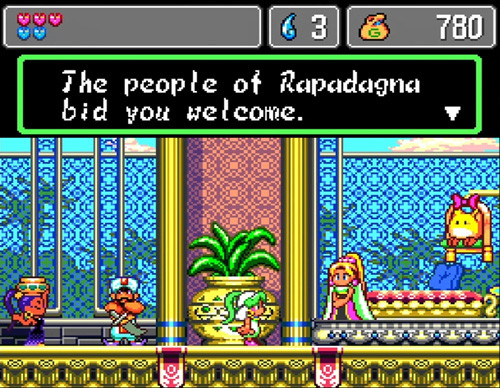 Monster World IV is built with Westone's typically creative design, and a simple game soon grows into a creative one with new challenges at each turn. Yet that's only a part of what makes this such a treasure. Simply put, Monster World IV is adorable. The atmosphere is bright and joyful, and it's buoyed by a soundtrack that remixes a catchy theme to new effect in every stage. Most of all, Asha and Pepe are a charming pair, animated with all sorts of little details, whether Asha's taking cover from a bomb's blast radius or Pepe's shaking himself off after a foray through a water temple. It's an undervalued gem from a generally undervalued developer, but now Monster World IV is available on Xbox Live, the PlayStation Network, and the Wii. So there's little excuse for neglecting it. Goofiest Name: Probably Pepelogoo, the full name of Pepe's species. No wonder Asha shortens it.
|
NEXT WEEK'S RELEASES
CORPSE PARTY: BOOK OF SHADOWS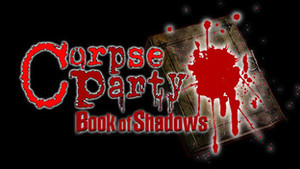 Developer: Team GrisGris
Developer: Team GrisGris Publisher: XSEED Games Platform: PlayStation Network (PSP/Vita) MSRP: $19.99 Book of Shadows isn't a mere sequel to the original Corpse Party. No, it's a sequel, prequel, and alternate-reality retelling all at once. The game follows the same general premise as the original, in which a band of teenagers tried (and sometimes failed) to survive the terrors of Heavenly Host Elementary School. Book of Shadows recasts a number of events from the first game, and each of its numerous chapters tackles some new plot point or hypothetical scenario. One of the what-if chapters tracks the doomed drama-club student Mayu Suzumoto, giving her a better shot at making it through the school alive. Other chapters flesh out more familiar characters. One follows teacher Yui Shishido as she reminisces about her old high-school days, which weren't exactly free of haunting moments. Another builds a backstory for morbid sociopath Yuuya Kizami. And there's a final scenario that opens only after players finish the other seven—or keep a save from the original Corpse Party at hand. In contrast to the original Corpse Party's RPG-Maker looks, Book of Shadows allows players to gaze around the scenery with a point-and-click interface. The game also relies heavily on dialogue choices to guide the story, and it's now much easier to save and backtrack after a bad decision. Of course, the grisly atmosphere remains Corpse Party's strongest suit, and Book of Shadows goes so far as to distort the player's perspective when a character's mind starts to snap. That'll happen quite a lot.
|
DMC: DEVIL MAY CRY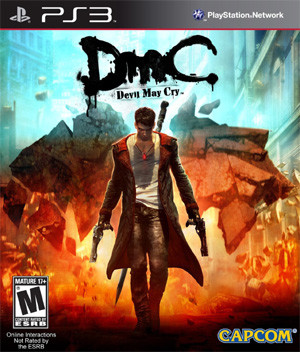 Developer:Ninja Theory/CAPCOM
Developer:Ninja Theory/CAPCOMPublisher: CAPCOM Platform: PlayStation 3/Xbox 360/PC MSRP: $59.99 Devil May Cry fans were a bit hard on CAPCOM and Ninja Theory's attempt to reboot the whole franchise. Gone is the white-haired cheeseball version of Dante, quip-spouting hero of the franchise since its 2001 debut. In the reimagined world of DmC, Dante is a more mundanely attired young street punk who cares for naught but wanton living and witty comebacks. This fresh-faced Dante can't escape his heritage, however; he's the son of an angel and a demon, and he's soon caught up in an underworld war against a devilish ruler who looks a bit like Michael Chiklis. This opens a curious new world before Dante's eyes; the city before him frequently twists and divides to show its true demonic nature, and a popular soda brand is revealed to be a monstrous mutant-drug. Parallels to Futurama or Flying Phantom Ship aside, most of this hidden dimension sets up battlefields where Dante can take on numerous horrors from the demon world. And yes, he's a bit of a jerk. CAPCOM assures us that this is all part of the plan, yet it's downright comical when the banter between Dante and some bulbous tumor-beast whittles down to them yelling “Fuck you!” at each other. Despite its mouthy new attitude, DmC tries to capture the same combat as its predecessors. Dante still packs a sword and two automatics, and he still double-jumps and dodges with much the same panache as the paler-tressed Dante. DmC's Dante has further options, as angelic and demonic powers are perpetually linked to the controller's shoulder buttons. The angel ability morphs Dante's weapon into a scythe that doubles as a grappling hook, while the devil one grants him a powerful but less wieldy axe, plus the power to grab enemies. Both talents play into the game's shapeshifting city, as the angel snare latches onto certain points while the devil weapon pulls pieces of the environment toward our hero. Demos of the game show off some faithfully hectic combat—along with developer Ninja Theory's penchant for pretty interludes that don't add much to the gameplay. And it'll be the gameplay that decides DmC's ultimate reception, no matter how many bouncers this new Dante punches.
|
discuss this in the forum (40 posts) |